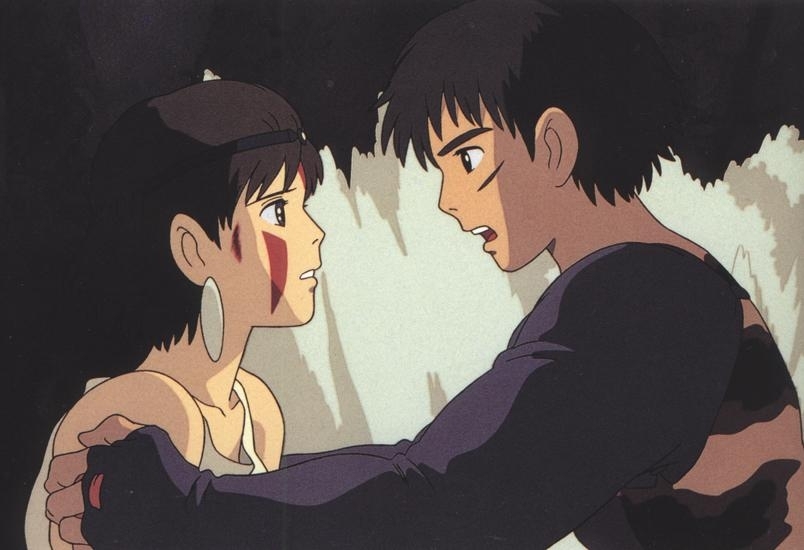
Princess Mononoke’s Main Character: A Deep Dive into San and Her World
Princess Mononoke, a masterpiece by Studio Ghibli, presents a complex narrative centered around the conflict between humanity and nature. At the heart of this story is San, the titular Princess Mononoke, a character whose identity is deeply intertwined with the forest and its inhabitants. This article will explore the nuances of San’s character, her motivations, and her significance within the broader context of the film.
San: A Child of the Forest
San, also known as Princess Mononoke, is not merely a warrior; she is a symbol of the wild, untamed spirit of nature. Abandoned by her human parents, she was raised by Moro, the wolf goddess, and considers herself a wolf. This upbringing has instilled in her a deep hatred for humans, whom she sees as destroyers of the forest. Her fierce loyalty to the forest and its creatures fuels her actions throughout the film.
From a young age, San learned to hunt, fight, and survive in the harsh environment of the forest. Moro taught her the ways of the wolves, and she became an integral part of their pack. This unique upbringing shaped her into a formidable warrior, skilled in combat and fiercely protective of her home. Her connection to the forest is so profound that she can communicate with the spirits and animals that dwell within it.
The Complexity of San’s Identity
One of the most compelling aspects of Princess Mononoke’s character is the internal conflict she faces. Despite her deep hatred for humans, she is, biologically, one of them. This creates a constant tension within her, as she struggles to reconcile her human origins with her wolf upbringing. She is caught between two worlds, belonging fully to neither. This internal struggle is a key element of her character arc and adds depth to her portrayal.
San’s identity crisis is further complicated by her interactions with Ashitaka, the protagonist of the film. Ashitaka, cursed by a corrupted boar god, seeks a cure and finds himself caught in the conflict between the humans and the forest. His presence challenges San’s preconceived notions about humanity and forces her to confront her own identity.
Ashitaka’s Influence on Princess Mononoke
Ashitaka’s arrival marks a turning point in Princess Mononoke’s journey. He sees beyond her fierce exterior and recognizes the humanity within her. Unlike the other humans she has encountered, Ashitaka shows respect for the forest and its creatures. He attempts to bridge the gap between the two warring factions, seeking a peaceful resolution to the conflict. His efforts gradually soften San’s hardened heart and open her eyes to the possibility of coexistence.
Ashitaka’s unwavering compassion and his commitment to finding a balance between humanity and nature deeply impact San. She begins to question her own beliefs and consider the possibility that not all humans are inherently destructive. This internal conflict is a crucial part of her character development, as she learns to navigate the complexities of her own identity and the world around her.
A Budding Romance Amidst Chaos
The relationship between Ashitaka and Princess Mononoke is not a traditional romance. It is forged in the fires of conflict and based on mutual respect and understanding. They recognize the shared values of protecting life and finding harmony, even amidst the chaos of war. Their connection is a powerful symbol of hope, suggesting that reconciliation between humanity and nature is possible.
While their bond deepens throughout the film, they ultimately choose different paths. San remains committed to protecting the forest, while Ashitaka chooses to help rebuild Irontown. Their separation is bittersweet, but it reflects the reality that true harmony requires sacrifice and compromise. Despite their different choices, their love and respect for each other endure.
Princess Mononoke: A Symbol of Environmentalism
Princess Mononoke is more than just an animated film; it is a powerful statement about the importance of environmentalism and the need for balance between human progress and ecological preservation. San, as a protector of the forest, embodies this message. Her unwavering commitment to defending her home serves as a reminder of the value of nature and the consequences of its destruction. Her character highlights the devastating impact of human greed on the environment.
The film’s themes resonate deeply with contemporary environmental concerns. The destruction of the forest in Princess Mononoke mirrors the real-world deforestation and habitat loss that threaten ecosystems around the globe. San’s fight to protect her home is a call to action, urging viewers to consider their own impact on the environment and to take steps to protect the natural world.
The Enduring Legacy of Princess Mononoke
Princess Mononoke remains a relevant and influential film decades after its release. Its themes of environmentalism, identity, and the conflict between humanity and nature continue to resonate with audiences worldwide. San, as the central figure in this narrative, is a complex and compelling character who embodies the spirit of the wild and the struggle for balance. Her story serves as a reminder of the importance of protecting our planet and finding harmony between human progress and ecological preservation.
The film’s artistry, storytelling, and thought-provoking themes have cemented its place as a classic of animation. Princess Mononoke’s exploration of complex issues and its nuanced characters make it a film that continues to inspire and challenge viewers. It remains a powerful and relevant work of art that speaks to the urgent need for environmental stewardship.
In conclusion, Princess Mononoke’s main character, San, is a multifaceted figure whose journey explores themes of identity, environmentalism, and the conflict between humanity and nature. Her unwavering commitment to protecting the forest and her complex relationship with Ashitaka make her a compelling and enduring character. The film’s message of balance and respect for the natural world remains as relevant today as it was upon its release, solidifying its place as a cinematic masterpiece. [See also: Studio Ghibli’s Environmental Themes] [See also: The Making of Princess Mononoke]
